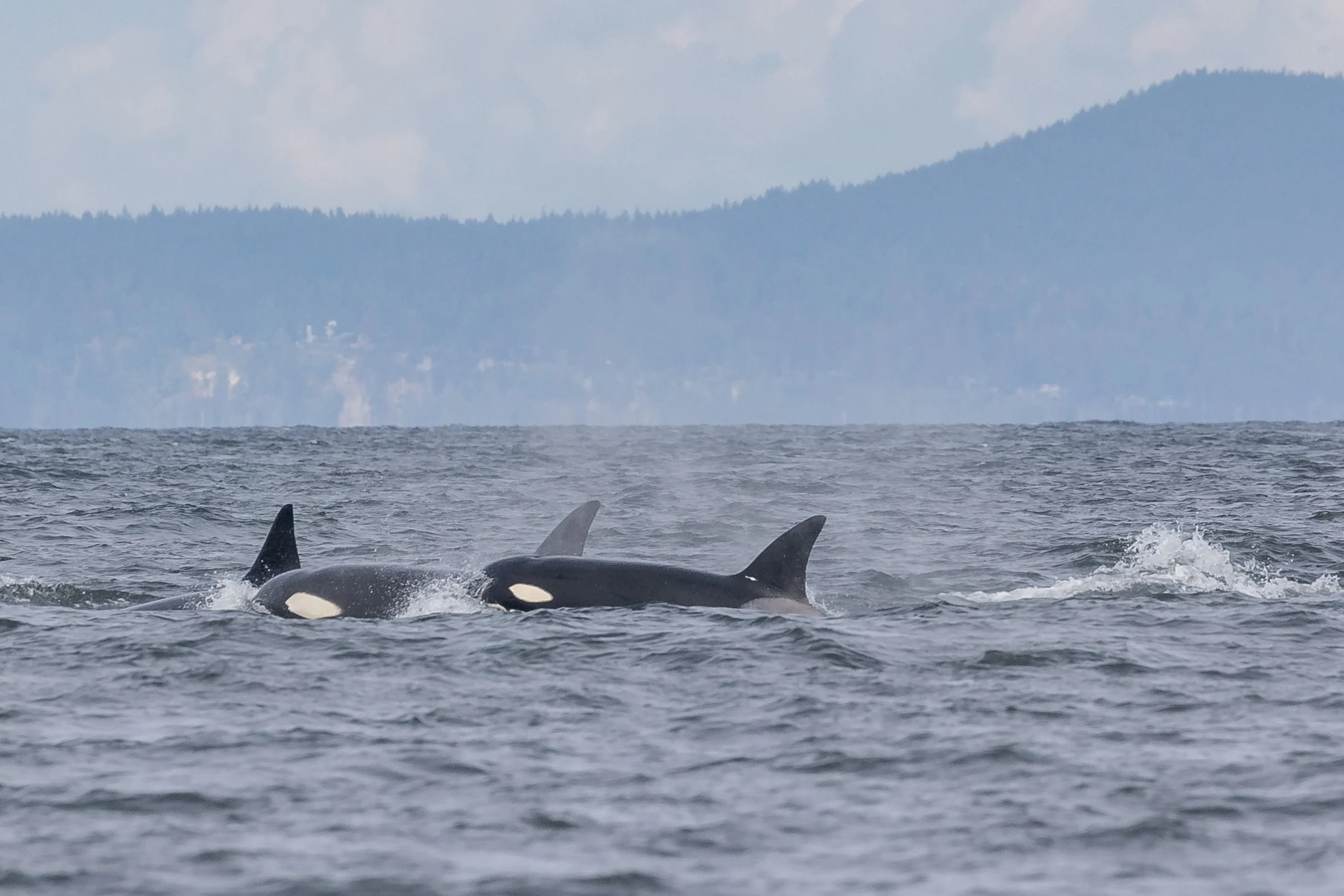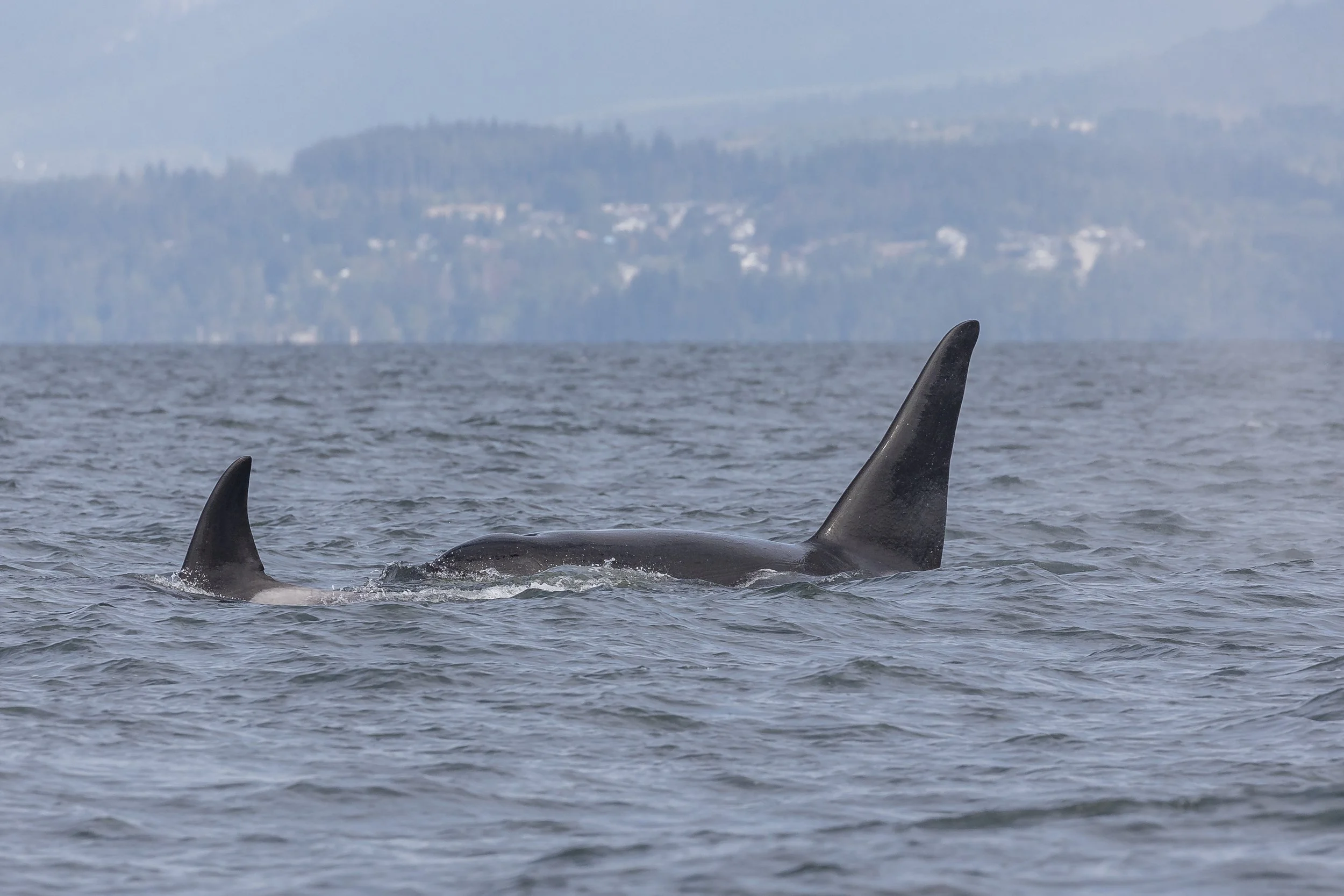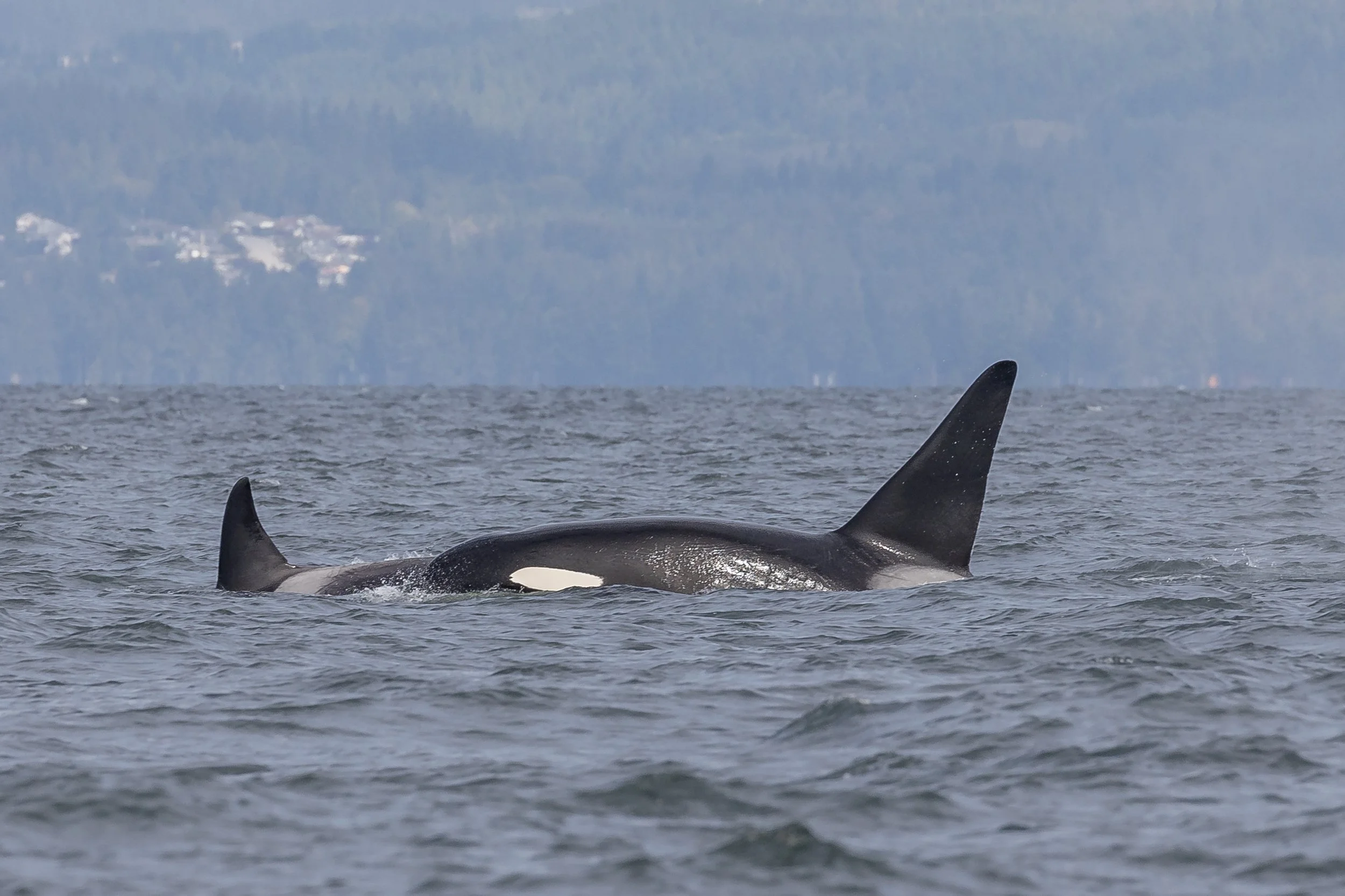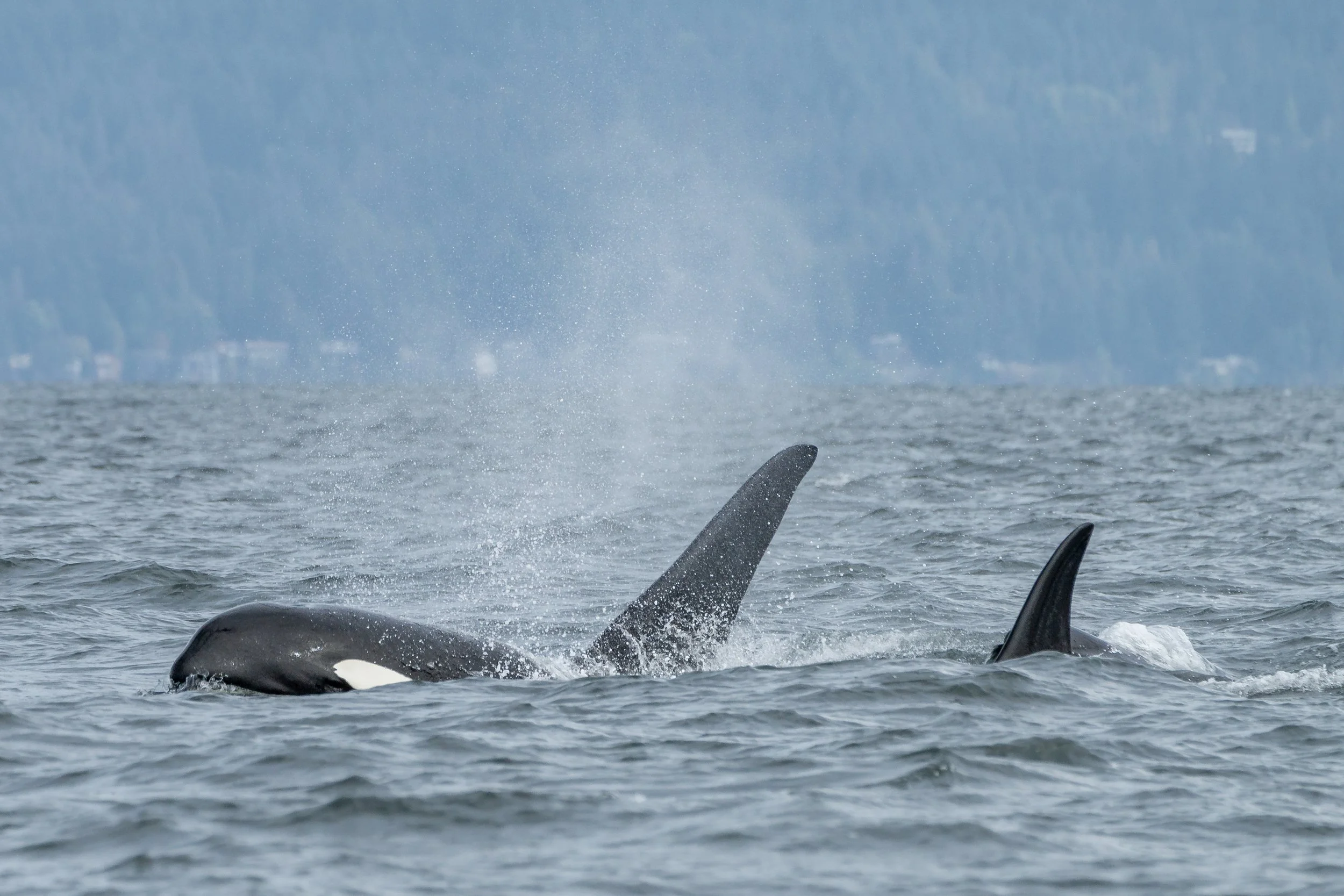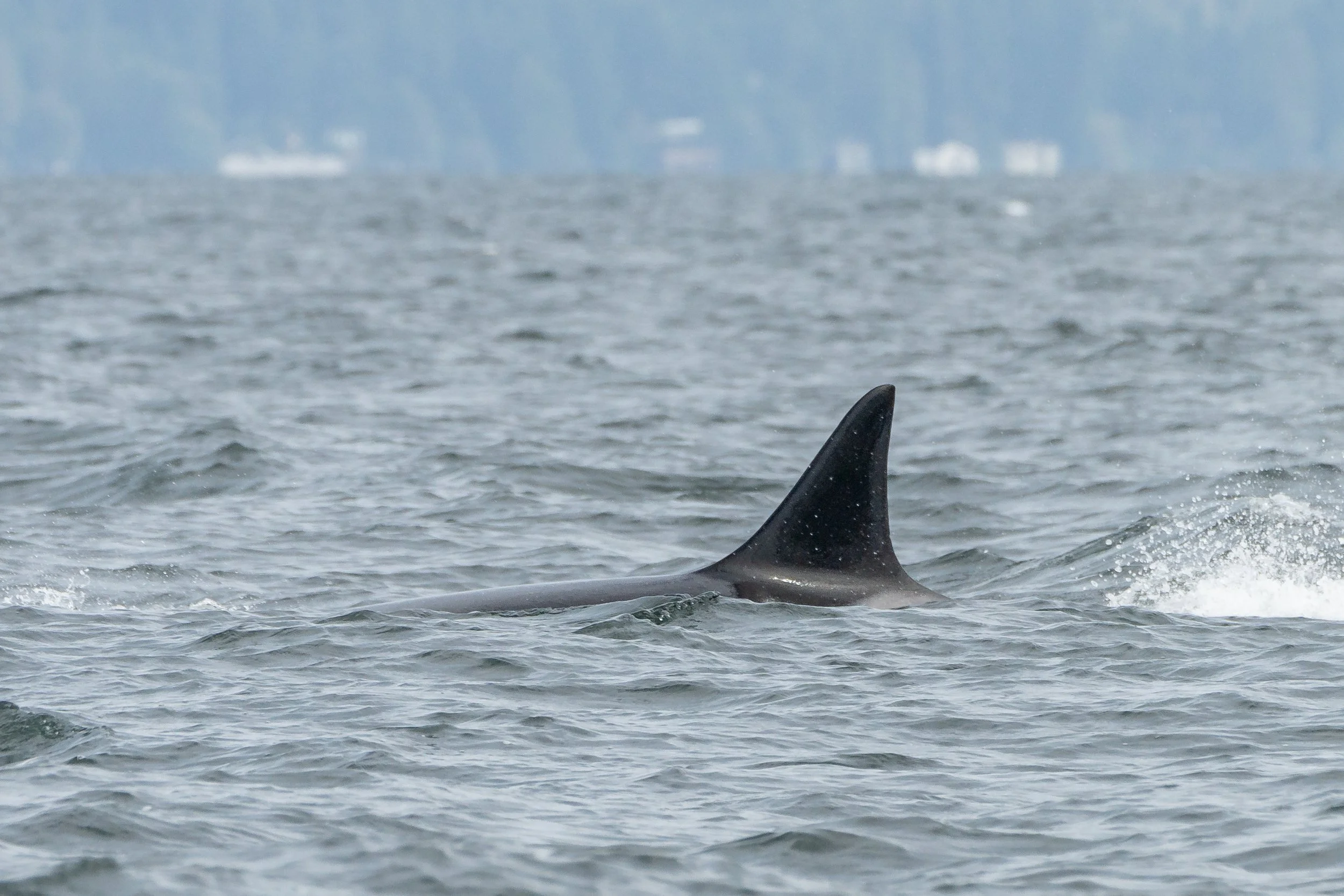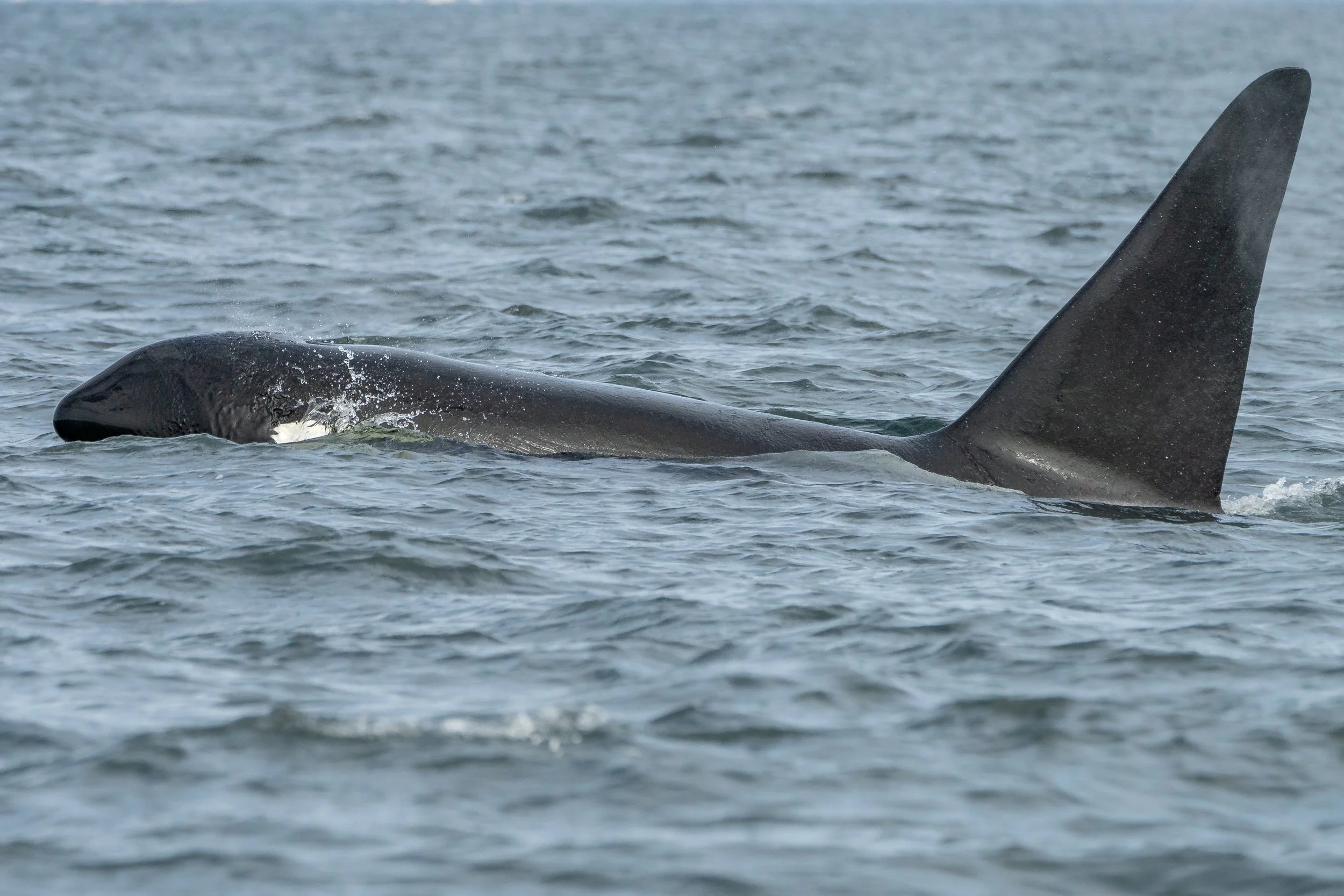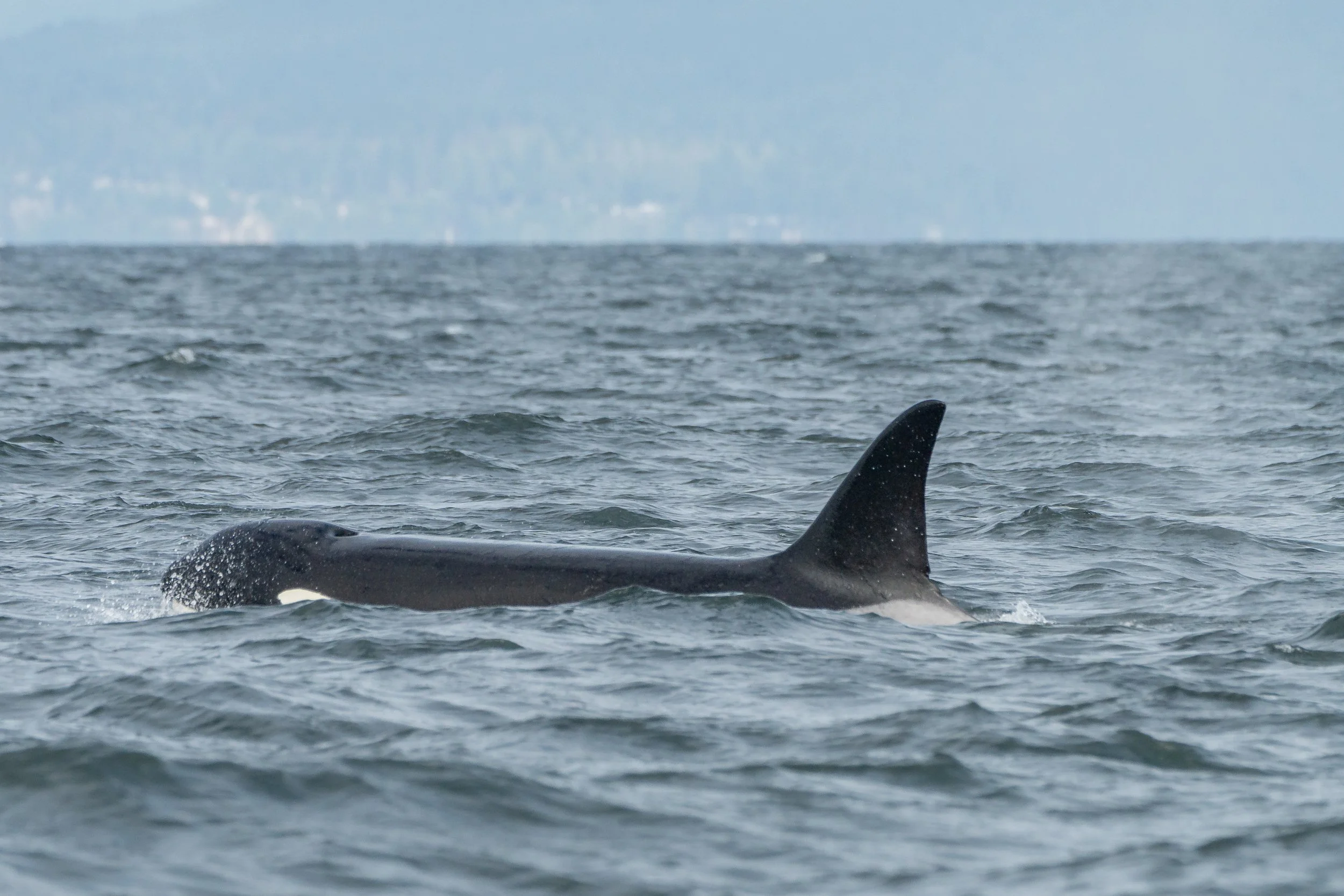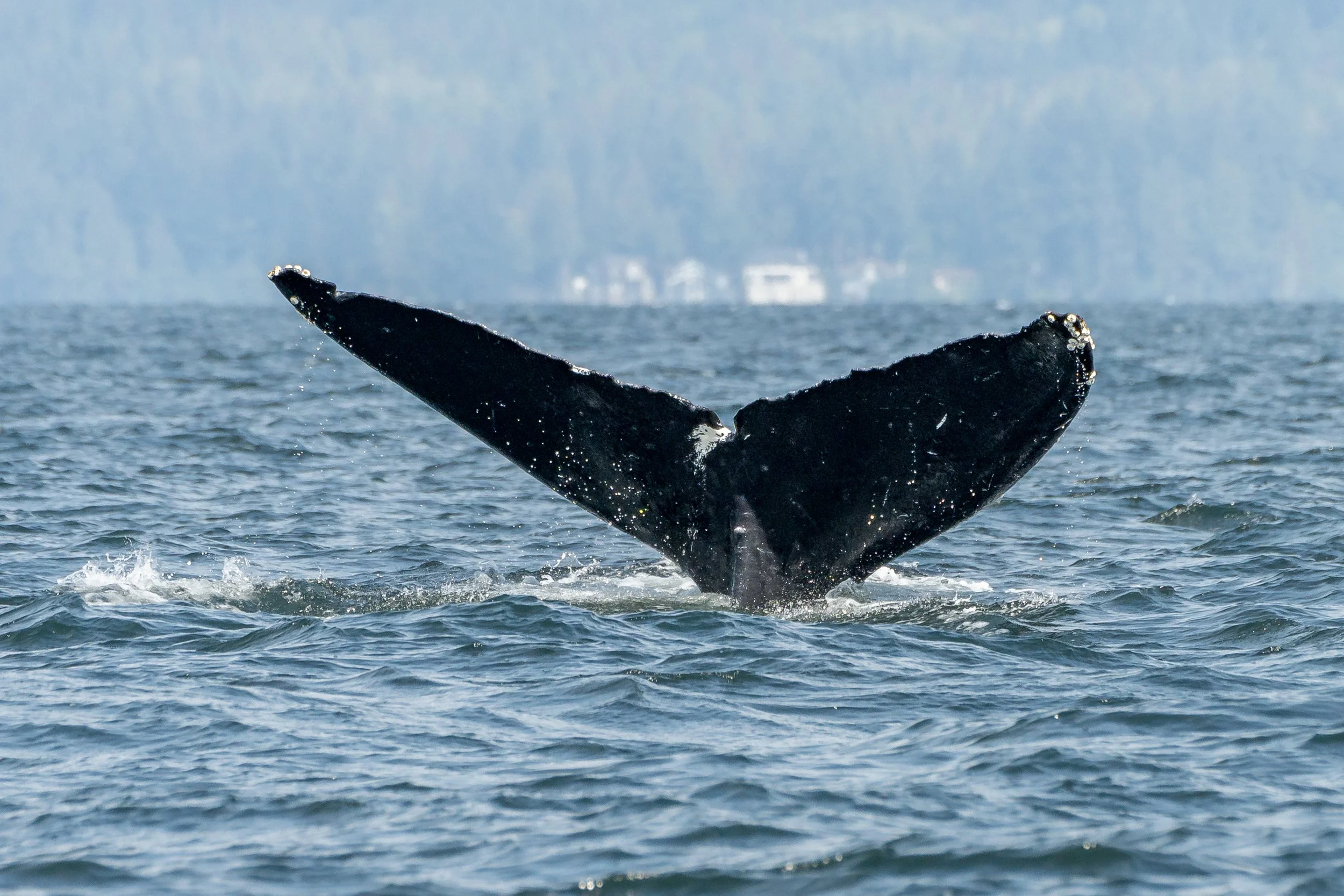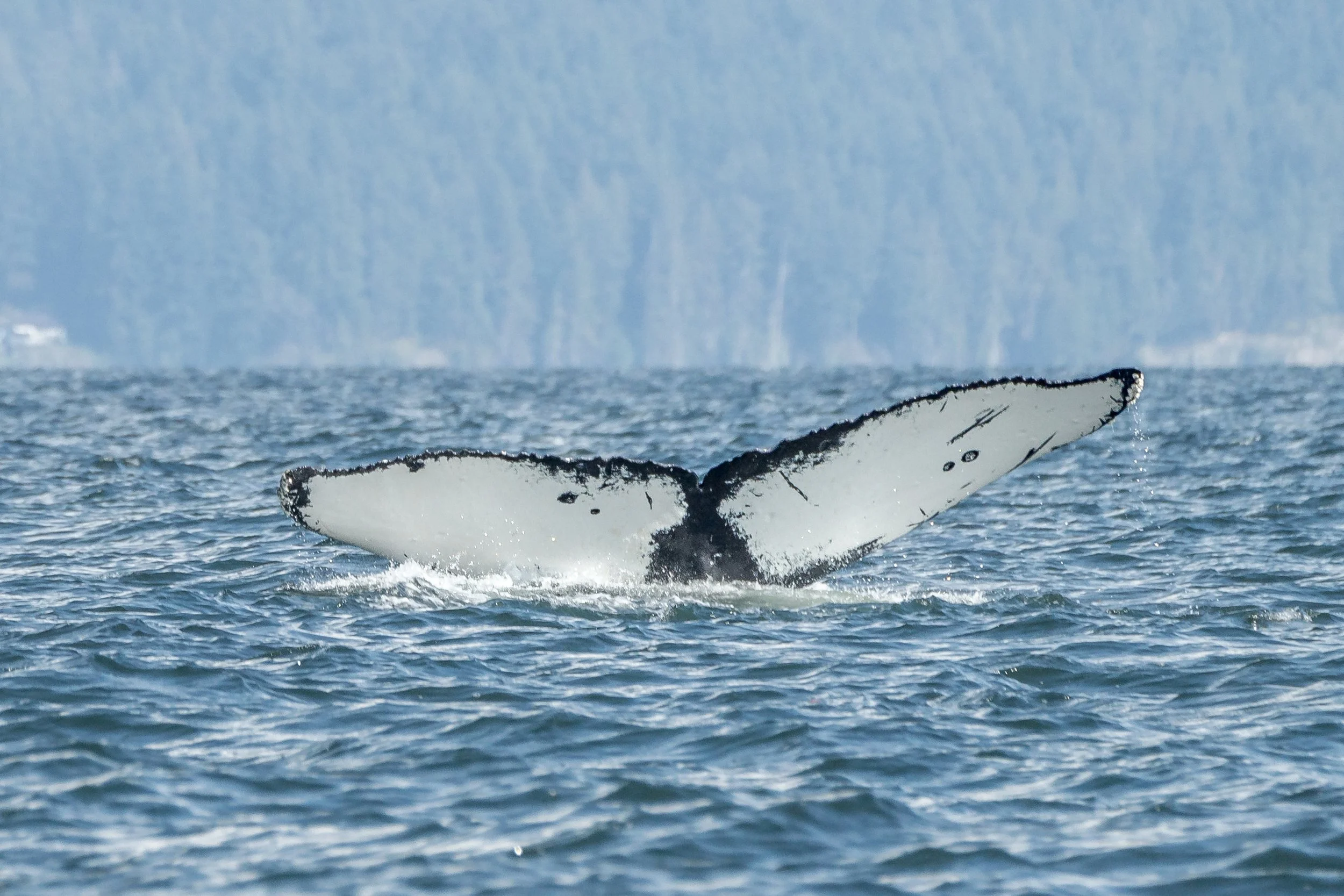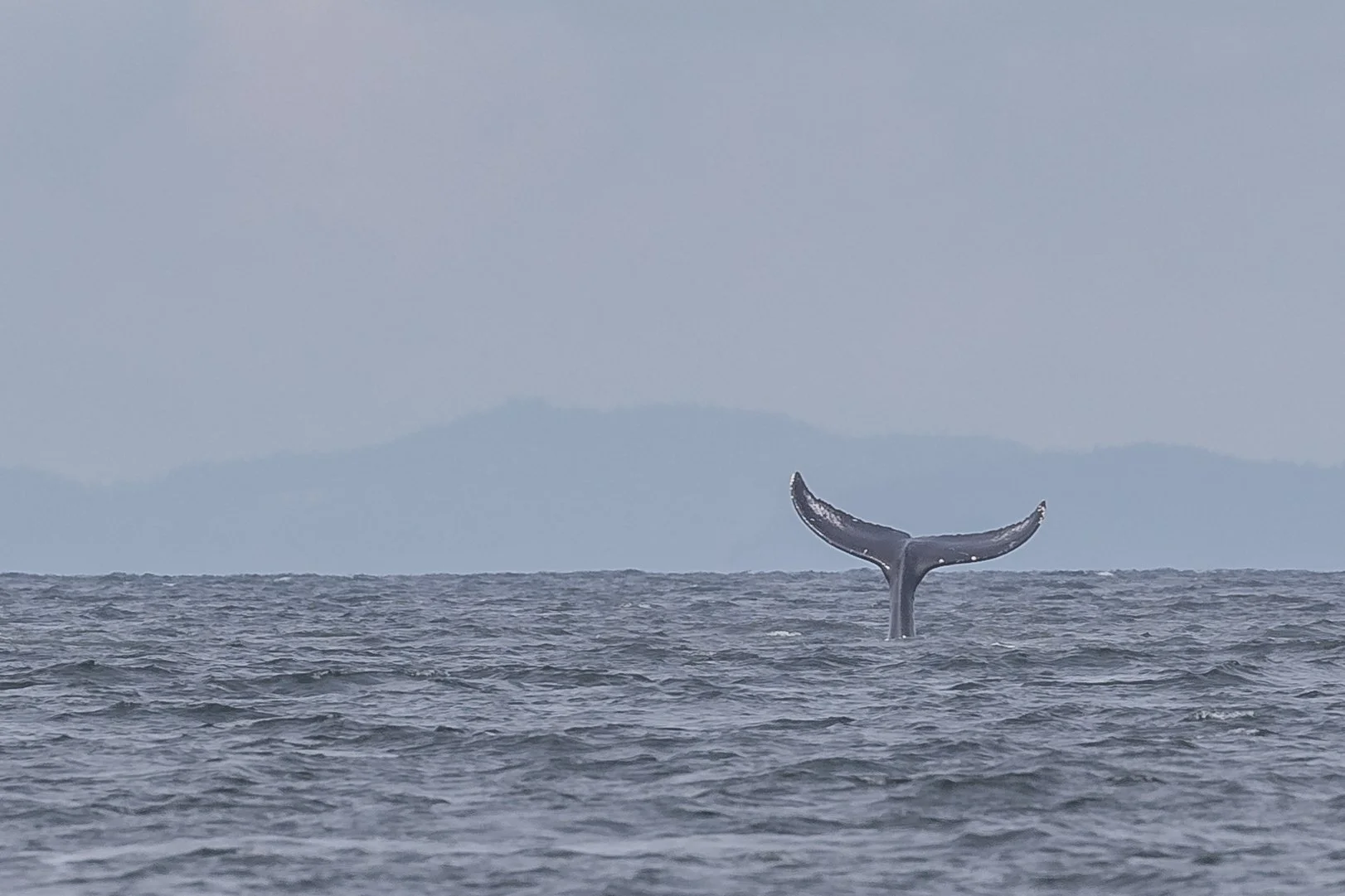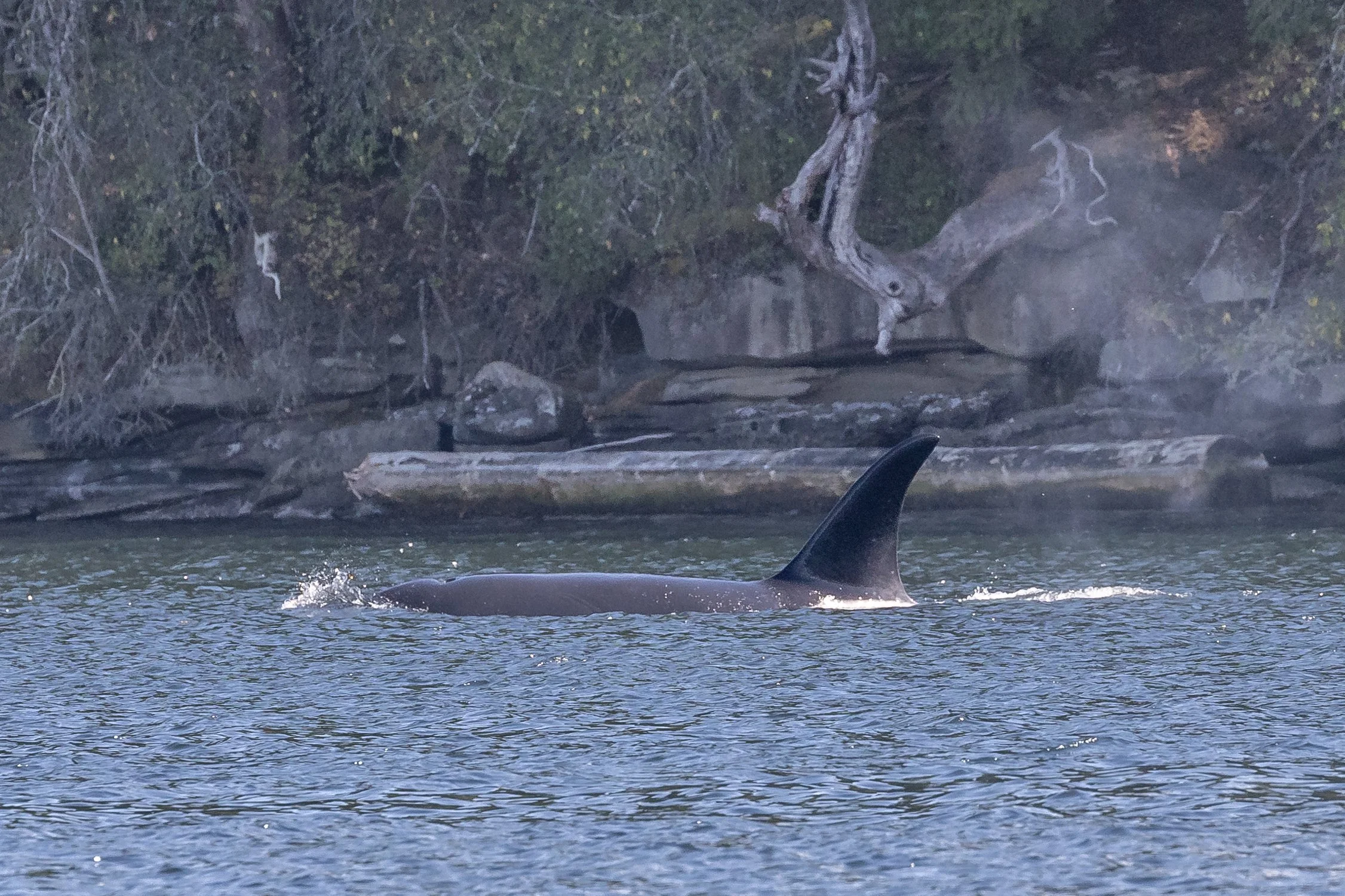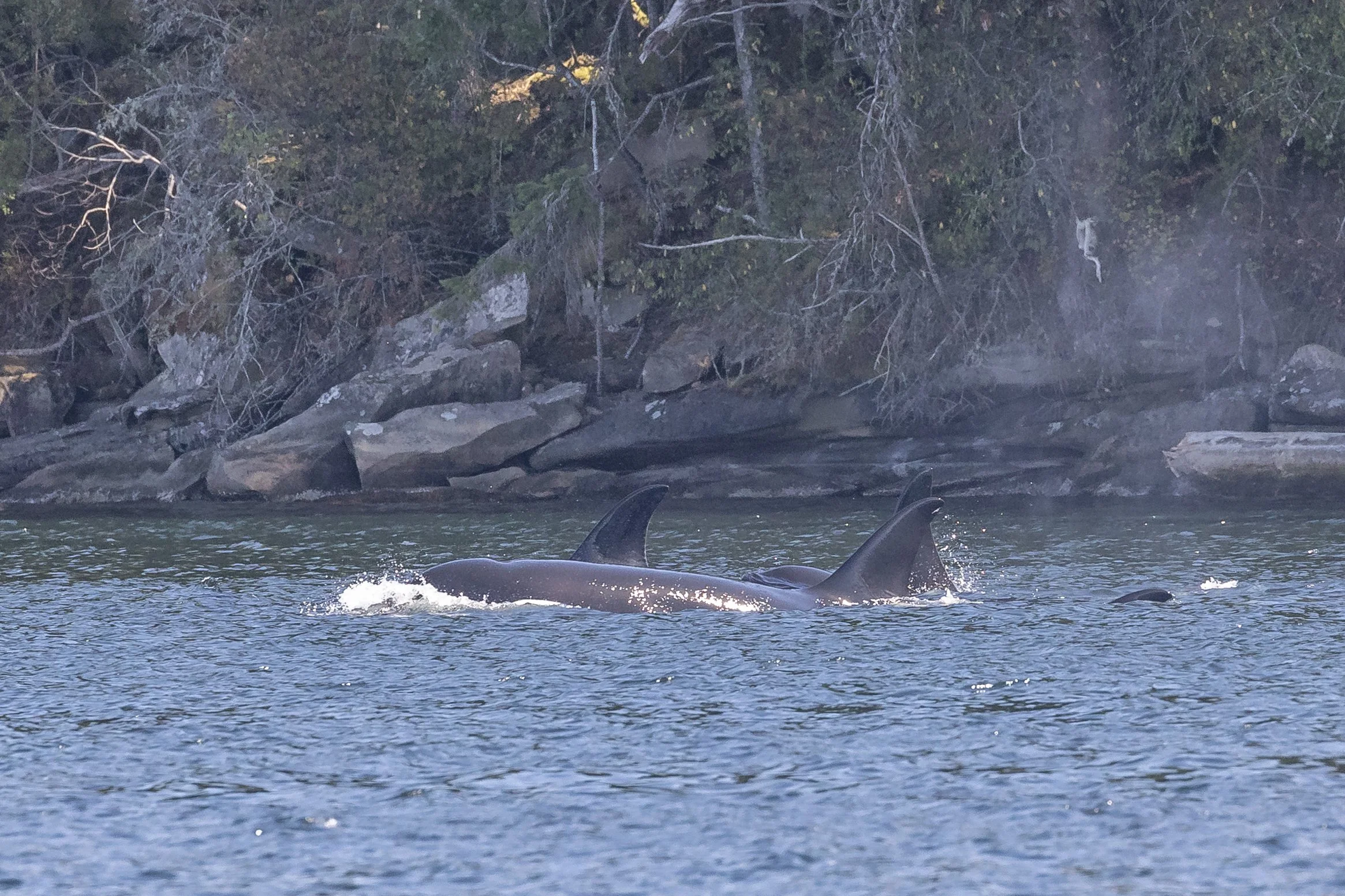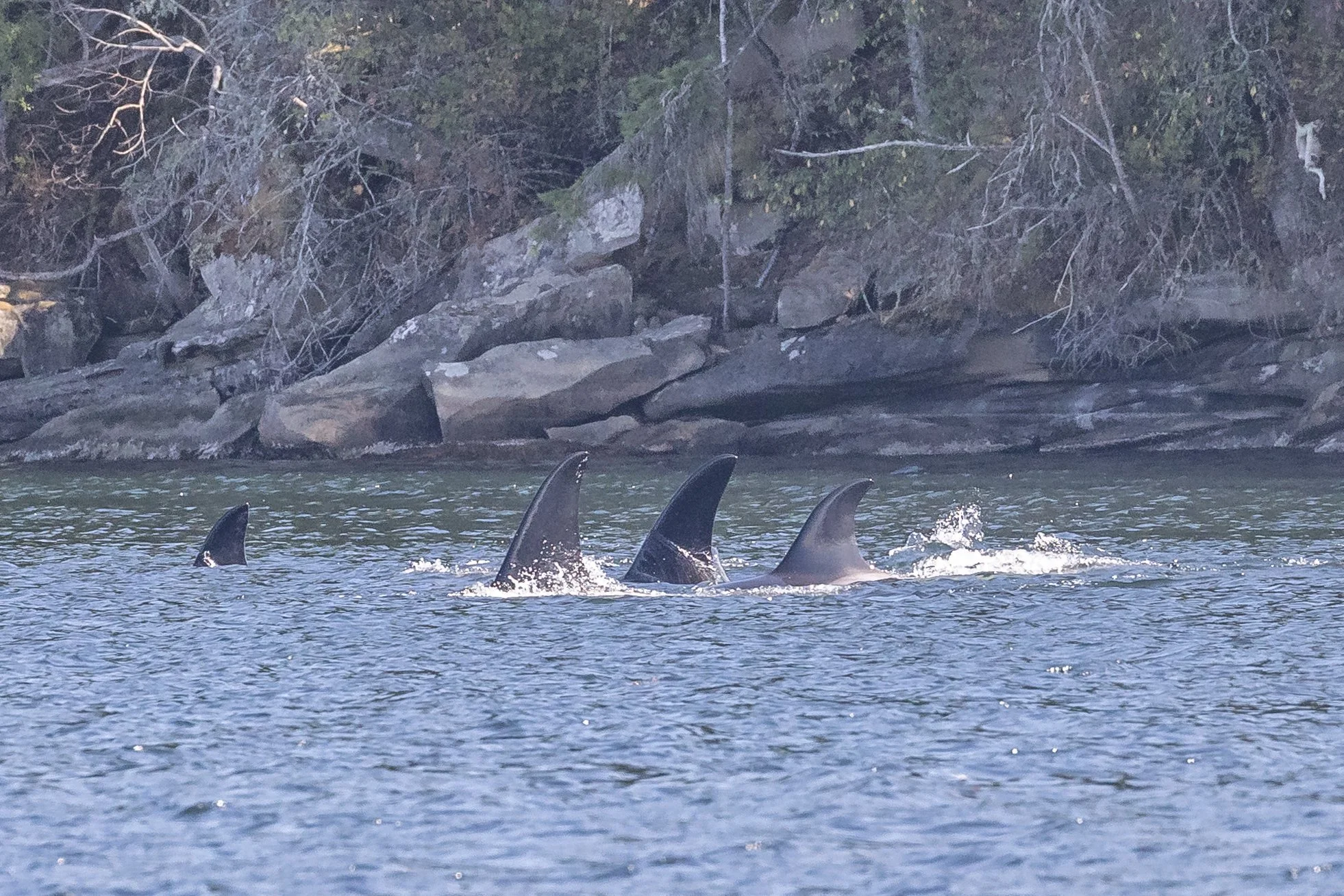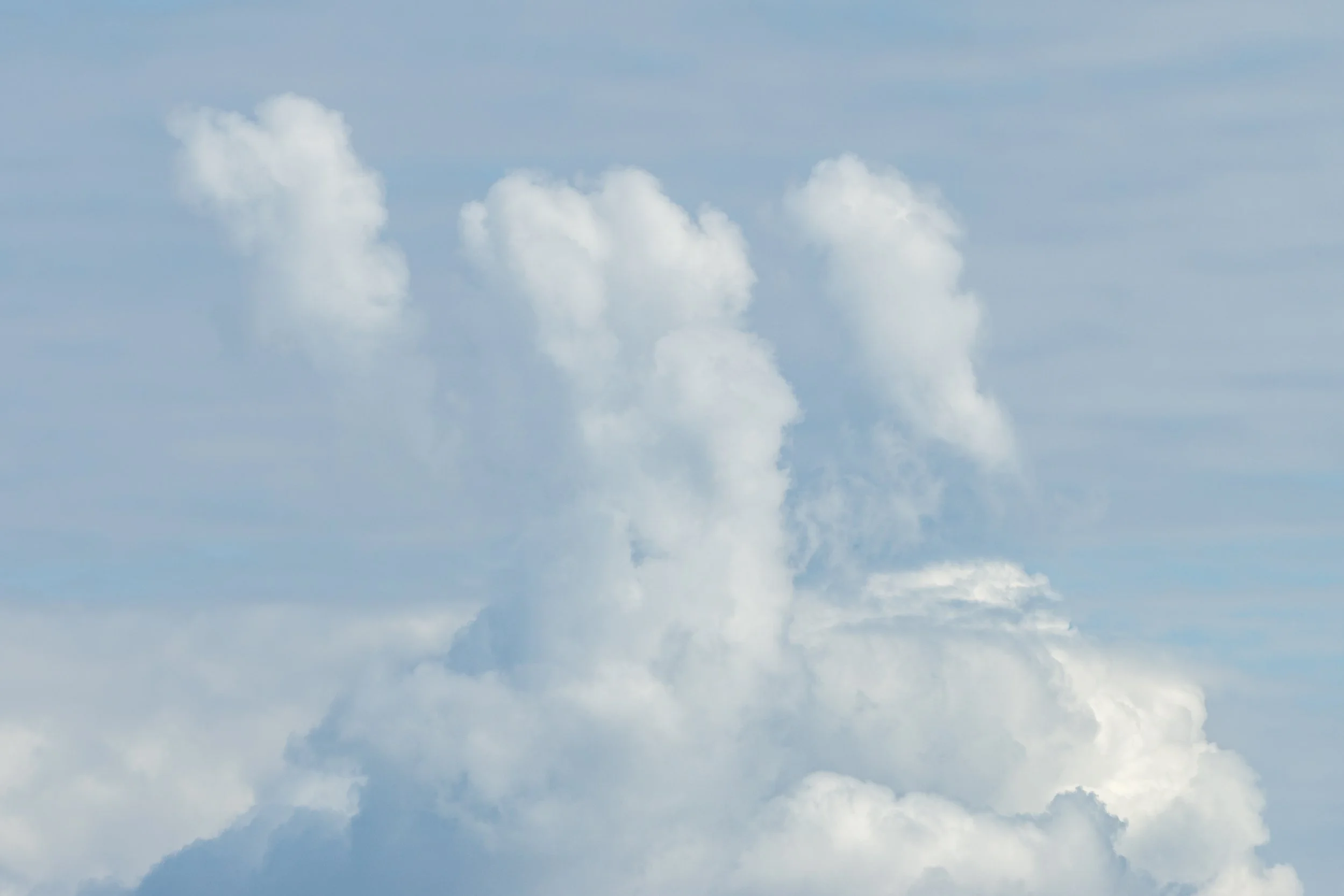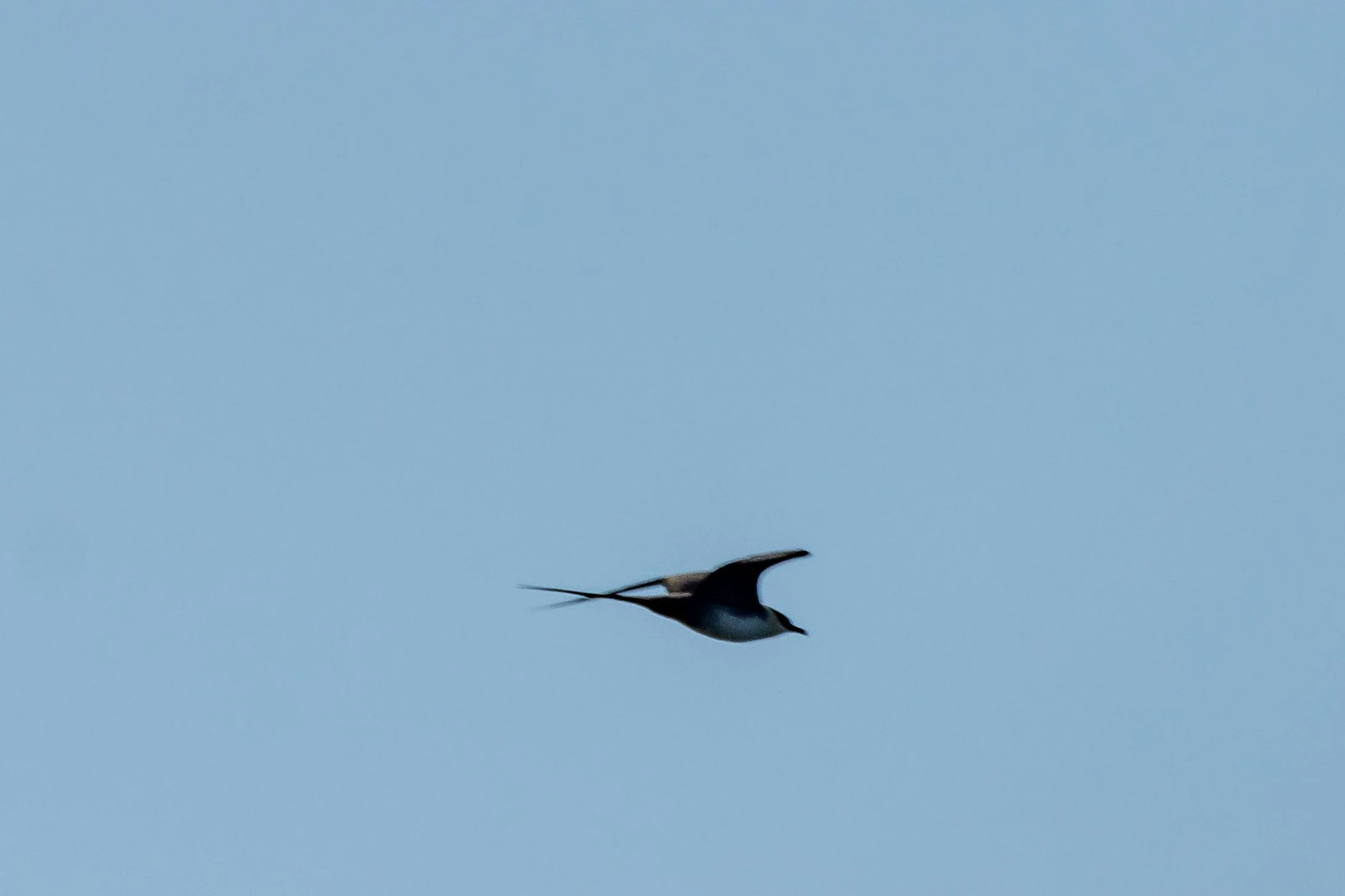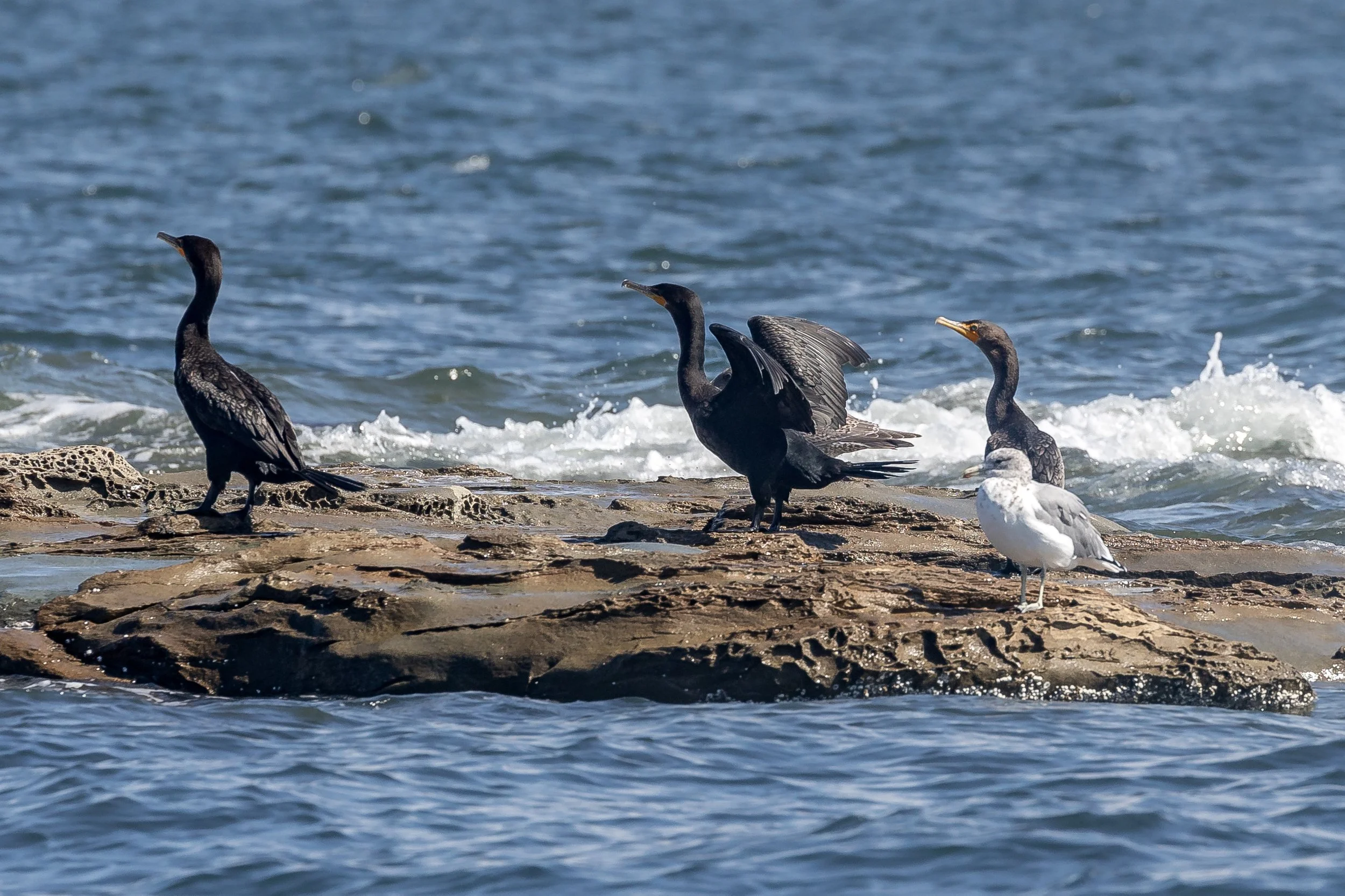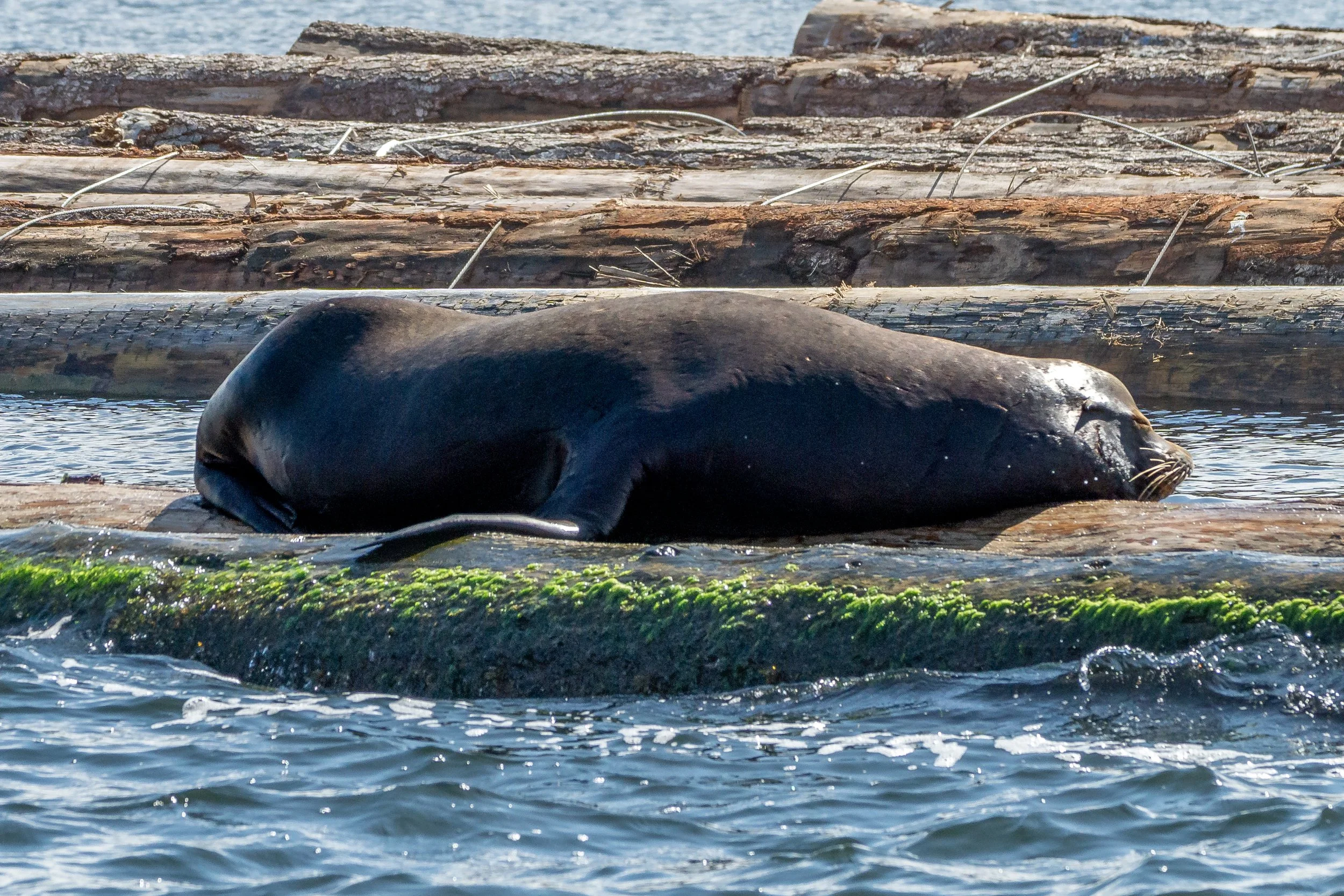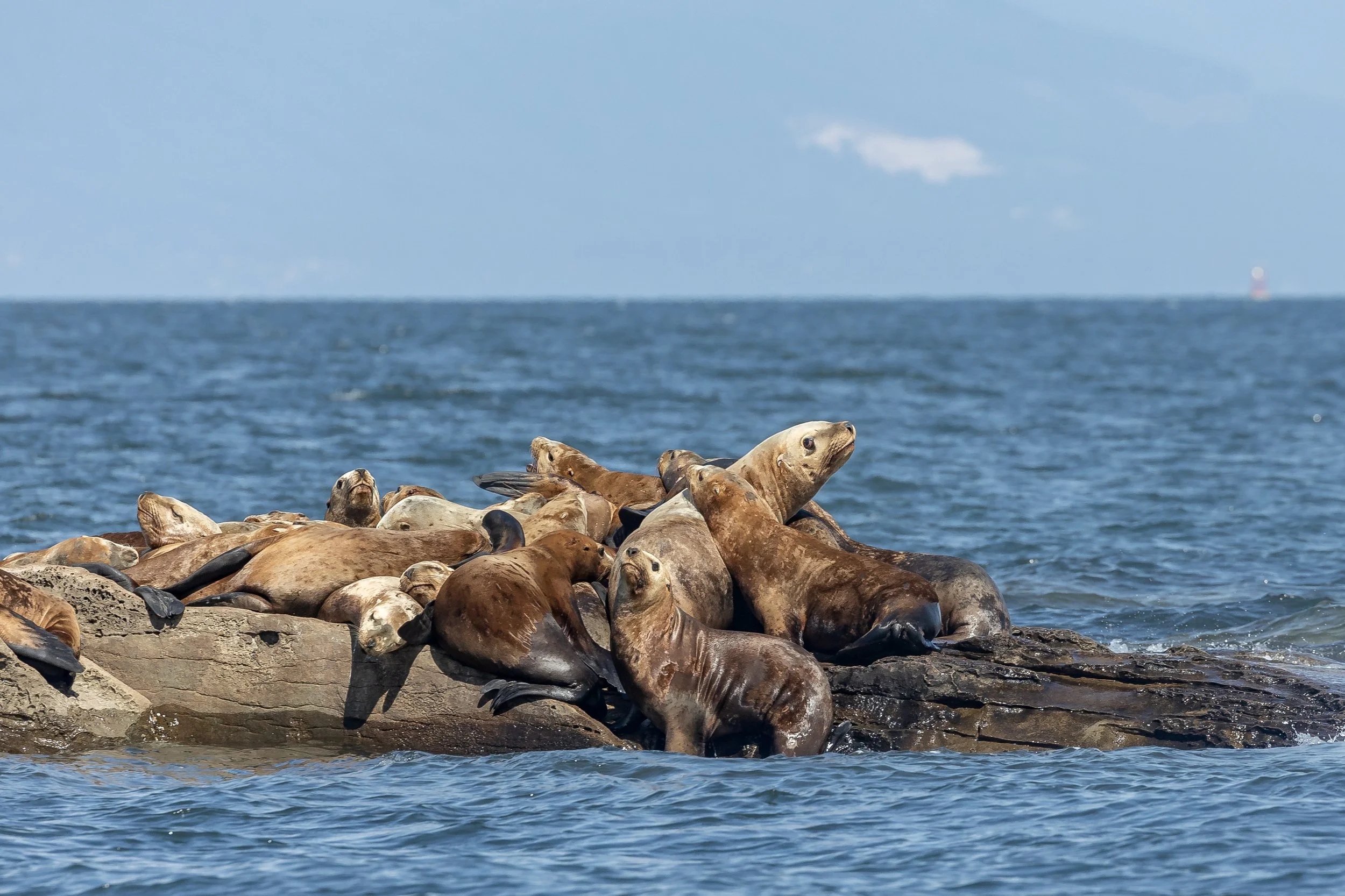September 7, 2023, 10:30 - Humpbacks right by the Orca!
It was another beautiful day when we pushed off the dock for our trip. Today we set off across the Strait of Georgia towards the Sunshine coast. We recieved an early report of orca in the area that we were hoping to be able to find. We located them travelling together near Halibut Bank.
We identified two different matrilines present today:
T059 ♀ (1970)
T059A2 ♀ (2009)
T059A4 (2017)
T002C Tasu ♀ (1989)
T002C1 Rocky ♂ (2002)
T002C3 Lucy ♀ (2011)
T002C5 (2020)
The T059s are a pod we had never seen before this year. It appears that the pod may have dispersed, as T059, T059A2, and T059A4 have been frequently seen together with no sign of T059A, T059A1, T959A1A, T059A3, or T059A5. The other 5 members of the T059 matriline have been sighted near Alert Bay recently - quite far away from our 3 T059 members are currently hanging out!
The T002Cs, on the other hand, are frequently seen in our area. Rocky’s giant perfect dorsal fin is always a sight to behold. He may not be as distinct-looking as other fan-favourite male orca such as Chainsaw and Galiano, but he is still impressive regardless! Rocky was sticking very close to his mother Tasu’s side during today’s encounter. It is always so neat to see just how big the males have grown when compared to their (relatively) small mothers.
These two families seemed to be in a hurry as they quickly travelled south past Halibut Bank. We got extra lucky and were able to make this a Double Species trip right away as there were 4 Humpbacks very close to these orca as well!
These four humpbacks were identified as:
Niagara (BCY0057), Two Spot (BCZ0432), Hendrix (BCY1278), and an Unknown!
Hendrix and their friend seemed to be a bit agitated today. It is likely they were feeling restless because of the orca that were nearby. This pair was seen lobtailing, breaching, and pec slapping. These actions are all very energy-consuming, and it is uncommon for humpbacks to do them unless they are well-fed.
Niagara and Two Spot, in typical humpback fashion, appeared to be busily eating away while we were observing them. Our Humpbacks are packing on the pounds right now. During this time of the year, humpbacks can consume up to about 3,000 pounds of food a day. For reference, the average human usually consumes a maximum of only 3 to 4 pounds of food a day - a day of Humpback food is roughly the same as 857 days or over two years’ worth of food for us!
We left our humpbacks behind at Halibut Bank and started heading back towards Vancouver Island to see other wildlife. One of our boats located a group of Steller sea lions snoozing away and some grumbly Harbour seals at Stinky Rocks on the outer coast of the Gulf Islands. The other group found some sleepy California sea lions and a Great Blue Heron by Harmac.
Just when we thought our time with whales was done for the day, one of our boats stumbled onto another pod as they headed into the Southern Gulf Islands - the T049As (or at least most of them) were travelling and hunting in Gabriola Pass:
T049A Nan ♀ (1986)
T049A3 Nat ♂ (2011)
T049A4 Neptune ♂ (2014)
T049A5 Nebula ♀ (2017)
T049A6 (2022) Nicknamed Charlie II
The two eldest sons of this pod, T049A1 Noah and T049A2 Jude, have been leaving their mother’s side frequently in the past years. Noah will join back up with his family regularly now, but Jude is usually nowhere to be seen. We are not sure why this daring duo has broken the social norms (male orca typically spend their entire lives travelling with their mother), but we hope they are both doing well.
T049A6 Charlie II, the youngest member of the T049A matriline, was as energetic as ever. This young one always likes to porpoise (quickly travel above the surface of the water, usually to gain speed) and today was no different. After departing the T049As we cruised back up in the Gulf Islands and made our way back to home port.
Photos from this trip were taken by Marine Naturalists Val Watson and Des Poier.
T059A2 with their distinct white scar on their dorsal. Photo by Des Poier.
T002C Tasu and her eldest child T002C1 Rocky. Photo by Des Poier.
T002C Tasu and her eldest child T002C1 Rocky - Rocky’s eyepatch is clearly visible above the waterline. Photo by Des Poier.
Can you spot T002C1 Rocky’s eye in this photo? Photo by Val Watson.
T059 - this matriarch has an unusually shaped dorsal making her a bit easier to spot than most matriarchs. Photo by Val Watson.
T002C1 Rocky with his perfect dorsal fin. Photo by Val Watson.
Matriarch T002C Tasu with her distinct notched dorsal. Photo by Val Watson.
T059A4 at the front, with T059A2 behind them. T059A4’s eyepatch is very curvy! Photo by Val Watson.
A pair of matriarchs - T002C Tasu behind T059. Photo by Val Watson.
Niagara (BCY0057) fluking. Photo by Val Watson.
Two Spot (BCZ0432) - can you see how he got his nickname? Photo by Val Watson.
While not a traditional angle for IDing, there are enough distinguishing markings visible in the photo to ID this humpback as Hendrix (BCY1278). Photo by Des Poier.
A beautiful backdive from Hendrix’s friend. Photo by Des Poier.
T049A3 Nat - he has grown up so much in the last couple of years! Photo by Des Poier.
The T049As all together. Photo by Des Poier.
All in a row! T049A Nan, T049A3 Nat, T049A4 Neptune, and T049A5 Nebula. Photo by Des Poier.
T049A6 Charlie II with their distinct underbite visible as they porpoise out of the water. Photo by Des Poier.
Orca blend in surprisingly well with our rocky shorelines. Photo by Des Poier.
While not our typical subject matter, this cute cactus cloud was too good not to share! Photo by Val Watson.
This was a super exciting discovery by one of our Naturalists - we believe this is a Long-tailed jaeger, a bird very rarely seen further south than the Northwest Territories/Yellowknife/Nunavut in Canada. Photo by Val Watson.
Great Blue Heron on the log booms at Harmac. Photo by Val Watson.
Photo by Des Poier.
A double species photo! Featuring Harbour seals and Cormorants. Photo by Des Poier.
A sleepy California sea lion on the log booms. Photo by Val Watson.
One giant cuddle puddle of sea lions at Stinky Rocks. Photo by Des Poier.
‘Personal space’ is a concept sea lions know nothing about. Photo by Des Poier.

